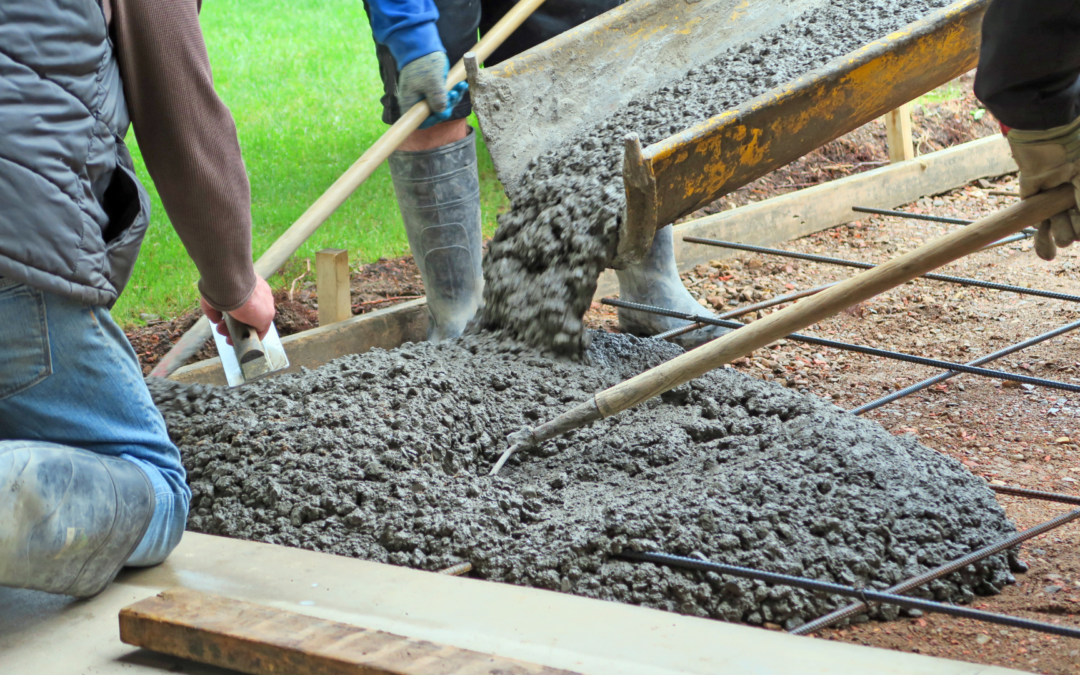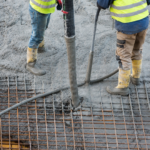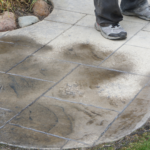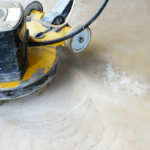Concrete pouring is an essential skill in the construction industry, pivotal for creating durable structures. Whether you’re a DIY enthusiast or a professional, understanding the nuances of concrete pouring can significantly impact the quality and longevity of your projects. This guide will walk you through everything you need to know about concrete pouring, from preparation to finishing touches, ensuring your projects stand the test of time.
What is Concrete Pouring?
Concrete pouring involves the process of placing and shaping concrete in a form to create a solid, durable structure. This technique is used in various construction projects, including foundations, driveways, and patios. The process requires precision and careful execution to achieve a uniform and robust final product.
Why is Proper Concrete Pouring Important?
Proper concrete pouring is crucial because:
- Ensures Structural Integrity: Well-poured concrete forms the backbone of any construction, providing the necessary strength and stability.
- Affects Durability: Proper techniques enhance the lifespan of concrete structures, reducing maintenance and repair needs.
- Minimizes Cracks and Damage: Correct pouring practices help prevent common issues like cracking, which can compromise the structure’s integrity.
Understanding these fundamentals sets the stage for a successful project, whether you’re laying a new driveway or building a garden wall.
Preparing for Concrete Pouring
Preparing for a concrete pour is a critical phase in any construction project, requiring meticulous planning and precise execution to ensure the foundation or structure being created is strong, durable, and meets all specified requirements. Here are the key steps to follow:
Planning Your Project
Before you begin pouring concrete, thorough planning is essential. This includes:
- Assessing the Site: Ensure the area is suitable for concrete pouring, free from obstructions and adequately graded. A well-prepared site prevents future complications such as uneven settling.
- Calculating Material Needs: Determine the amount of concrete required for your project. This can be done by calculating the volume of the area to be filled. Accurate calculations ensure you don’t run short of materials halfway through the job.
- Permits and Regulations: Check local regulations to see if you need any permits. Compliance with local codes is crucial to avoid legal issues and ensure safety standards are met.
Gathering the Necessary Tools and Materials
Having the right tools and materials on hand can streamline the concrete pouring process. You’ll need:
- Concrete Mix: Choose a mix suitable for your project’s requirements.
- Formwork Materials: Sturdy materials like wood or metal to hold the concrete in place.
- Mixing Tools: Depending on the project size, you might need a wheelbarrow and hoe or a mechanical mixer.
- Pouring Tools: Shovels, buckets, and other tools to transfer the mixed concrete to the formwork.
- Finishing Tools: Trowels, screeds, and other tools for smoothing and finishing the surface.
Preparing the Formwork
Formwork holds the concrete in place until it hardens. Steps to prepare formwork include:
- Designing the Formwork: Ensure it matches the desired shape and dimensions of your project. Proper design prevents deformation and ensures accurate dimensions.
- Assembling the Formwork: Use sturdy materials like wood or metal to create a robust structure that can withstand the weight of the concrete.
- Securing the Formwork: Ensure the formwork is level and stable to prevent shifting during pouring. Stability is key to maintaining the integrity of the shape.
The Concrete Pouring Process
The concrete pouring process is a pivotal construction activity that transforms a planned structural design into reality, necessitating careful coordination and attention to detail to achieve the desired outcome. Here are the essential steps involved in this process:
Mixing the Concrete
Properly mixed concrete is vital for a successful pour. Follow these steps:
- Choose the Right Mix: Use a mix that suits your project requirements, whether it’s pre-mixed or custom. Different projects may require different concrete strengths and properties.
- Mix Thoroughly: Combine water, cement, sand, and gravel in the correct proportions. Mix until the consistency is uniform. Inconsistent mixing can lead to weak spots in the concrete.
Pouring the Concrete
When pouring concrete, work methodically to ensure even distribution:
- Start from the Far End: Begin pouring at the farthest point and work your way towards the exit to avoid stepping on freshly poured concrete. This prevents disturbing the wet mix and ensures a smooth surface.
- Pour in Layers: For large projects, pour the concrete in layers to prevent it from drying too quickly. Layering helps manage the curing process and reduces the risk of cracks.
- Use a Vibrator: A concrete vibrator can help eliminate air bubbles, ensuring a dense, compact finish. Air pockets can weaken the structure if not properly managed.
Finishing the Concrete
Finishing the concrete effectively is the final step of the pouring process, which ensures the surface is smooth, durable, and correctly textured for its intended use. This phase requires precision and timeliness to achieve the best results. Here are the key aspects to consider:
Smoothing and Leveling
Once the concrete is poured, it’s time to smooth and level the surface:
- Use a Screed: A screed helps to level the surface by scraping off excess concrete. This initial leveling sets the stage for a smooth finish.
- Float the Surface: Use a bull float to smooth the surface and bring the cream (fine cement paste) to the top. This process creates a uniform surface ready for final finishing.
Edging and Jointing
Edging and jointing help prevent cracks and give your project a professional finish:
- Edging: Use an edger to create clean, smooth edges along the perimeter. This step enhances the appearance and durability of the edges.
- Jointing: Cut control joints to allow for expansion and contraction, reducing the risk of cracks. Proper jointing is crucial for the longevity of the concrete.
Curing the Concrete
Curing is a critical step that ensures the concrete achieves its maximum strength:
- Keep it Moist: Cover the concrete with a curing compound or plastic sheeting to retain moisture. Proper moisture retention is essential for the curing process.
- Allow Adequate Time: Typically, concrete takes about 28 days to reach its full strength. Patience during this phase is crucial to avoid premature loading that could damage the concrete.
Common Mistakes to Avoid
Even experienced individuals can make mistakes during concrete pouring. Here are common pitfalls and how to avoid them:
- Incorrect Mix Ratios: Always follow the recommended mix ratios to ensure proper strength and durability. Deviating from the formula can lead to weak concrete.
- Inadequate Site Preparation: Ensure the site is properly prepared to avoid uneven settling or structural issues. Proper site prep is the foundation of a successful pour.
- Neglecting Curing: Proper curing is essential. Skipping this step can result in weak, brittle concrete that fails prematurely.
Tips for Successful Concrete Pouring
To ensure the concrete pouring process goes smoothly and yields a high-quality finished product, it’s crucial to follow best practices and proper techniques. Here are several tips to help guide the process towards success:
- Work in Favorable Weather: Avoid pouring concrete in extreme temperatures, as this can affect the curing process. Ideal conditions are between 50°F and 60°F (10°C and 15°C).
- Stay Organized: Keep your tools and materials organized to ensure a smooth workflow. Preparation can save time and reduce stress during the pour.
- Get Help When Needed: Concrete pouring can be labor-intensive. Don’t hesitate to enlist help for larger projects. Additional hands can make the process more efficient and manageable.
Advanced Techniques for Concrete Pouring
To elevate the quality of your concrete structures and ensure long-lasting results, mastering advanced concrete pouring techniques can be a game-changer. Here are some innovative methods that can enhance efficiency and structural integrity:
Using Reinforcements
For added strength, especially in structural projects, consider using reinforcements:
- Rebar: Reinforcing bars (rebar) provide additional tensile strength.
- Wire Mesh: Useful for flat surfaces like driveways, wire mesh helps distribute weight and prevent cracking.
Decorative Concrete
Enhance the aesthetic appeal of your concrete projects with decorative techniques:
- Staining: Use concrete stains to add color and depth.
- Stamping: Create patterns and textures with concrete stamps.
- Polishing: Achieve a smooth, shiny surface with concrete polishing tools.
Maintaining Your Concrete Structure
After successfully pouring and finishing your concrete, it’s important to implement a sound maintenance routine to preserve its aesthetics and functionality. Here are effective strategies to keep your concrete structure in optimal condition:
Regular Inspection
Conduct regular inspections to identify and address issues early. Look for signs of cracking, spalling, or other damage.
Cleaning
Keep your concrete surfaces clean to maintain their appearance and longevity. Use appropriate cleaning agents and tools to avoid damaging the concrete.
Sealing
Sealing concrete can protect it from moisture, chemicals, and wear. Choose a high-quality sealer and reapply as recommended.
Conclusion
Mastering concrete pouring requires attention to detail and adherence to best practices. By following this comprehensive guide, you can achieve professional-grade results in your construction projects. For expert assistance and top-quality service, trust Greensboro Concrete Services.
Our experienced team is ready to help you bring your concrete projects to life with precision and care. Contact us today to learn more about how we can support your next project. Whether you need a new driveway, patio, or foundation, Greensboro Concrete Services is here to ensure your concrete work is done right, every time.






